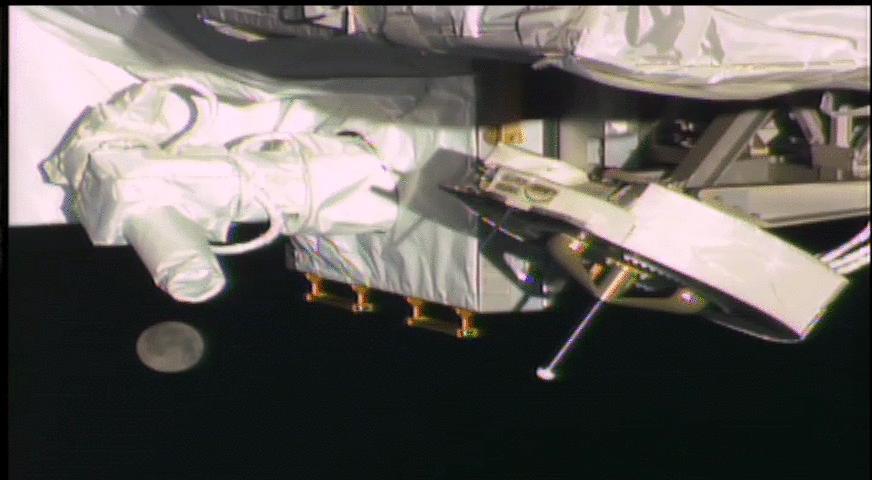
NASA beamed a high-definition video from the International Space Station down to Earth Thursday (June 5) in a demonstration that could pave the way for much speedier deep-space communications down the road.
The agency's Optical Payload for Lasercomm Science (OPALS) instrument transmitted a new 37-second, 175-megabit video called "Hello, World!" to a ground station in California as the orbiting lab soared 260 miles (418 kilometers) overhead.
It would ordinarily take more than 10 minutes to beam home something as large as "Hello, World!" using traditional radio-wave communications, NASA officials said. But OPALS transmitted each copy of the new video in just 3.5 seconds.
"It's incredible to see this magnificent beam of light arriving from our tiny payload on the space station," Matt Abrahamson, OPALS mission manager at NASA's Jet Propulsion Laboratory in Pasadena, California, said in a statement.
"We look forward to experimenting with OPALS over the coming months in hopes that our findings will lead to optical communications capabilities for future deep space exploration missions," he added.
OPALS transmitted the video Thursday after locking onto a laser beacon shining from the Optical Communications Telescope Laboratory ground station at the Table Mountain Observatory in Wrightwood, California.
Such precise targeting is necessary because the space station is traveling at 17,500 mph (28,160 km/h). Successfully transmitting a message via optical communications from the orbiting lab to Earth is akin to aiming a laser pointer at the end of a single hair from 30 feet (9 meters) and keeping it locked on while walking, NASA officials said.
Get the Space.com Newsletter
Breaking space news, the latest updates on rocket launches, skywatching events and more!
The entire transmission Thursday took 148 seconds and reached a peak data rate of 50 megabits per second, officials said.
OPALS arrived at the space station on April 20 aboard SpaceX's robotic Dragon capsule during the company's third contracted cargo run to the orbiting lab for NASA. The instrument is scheduled to operate for a prime mission lifetime of 90 days.
Follow Mike Wall on Twitter @michaeldwall and Google+. Follow us @Spacedotcom, Facebook or Google+. Originally published on Space.com.
Join our Space Forums to keep talking space on the latest missions, night sky and more! And if you have a news tip, correction or comment, let us know at: community@space.com.

Michael Wall is a Senior Space Writer with Space.com and joined the team in 2010. He primarily covers exoplanets, spaceflight and military space, but has been known to dabble in the space art beat. His book about the search for alien life, "Out There," was published on Nov. 13, 2018. Before becoming a science writer, Michael worked as a herpetologist and wildlife biologist. He has a Ph.D. in evolutionary biology from the University of Sydney, Australia, a bachelor's degree from the University of Arizona, and a graduate certificate in science writing from the University of California, Santa Cruz. To find out what his latest project is, you can follow Michael on Twitter.









